The Biosphere: Life on Earth
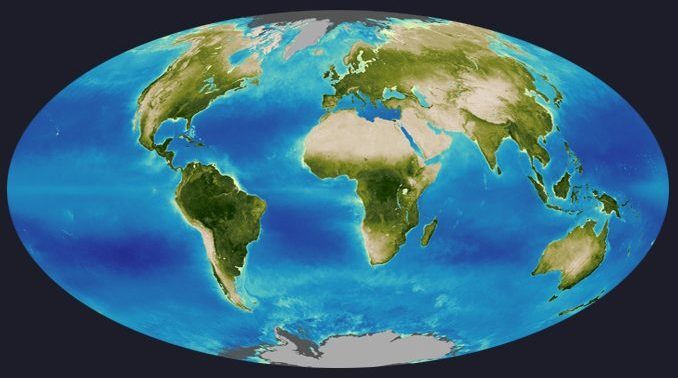
Earth’s biosphere
Earth’s biosphere is the layer of the planet where life exists.
That means you, me, plants, insects, bacteria, and living things on land, air, and oceans make up the biosphere.
And in case you were wondering… viruses are part of the biosphere too. But they can be a bit tricky.
Today, let’s explore Earth’s biosphere. One of Earth’s spheres that is completely unique to our planet.
What are examples of the biosphere?
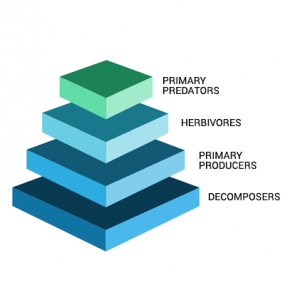
Organisms in the biosphere rely on each other as part of the food chain. The food chain is the building block of the biosphere where energy is transferred from one level to the next.
- PRIMARY PRODUCERS: Plant life and ocean phytoplankton (tiny plant-like organisms in the oceans) are examples of primary producers. These organisms are at the bottom of the food chain and power the entire biosphere.
- HERBIVORES: Herbivores feed on plants. Then, predators consume herbivores. Humans and apex predators are considered to be at the top of the food chain.
- DECOMPOSERS: Finally, decomposers break down matter so it can be recycled as part of the nutrient cycle. This completes the full circle because all matter becomes part of the food chain once again.
The Interdependence of Living Things
Living things depend on each other and their environment in many ways. Plants and animals have special relationships that help them survive. For example, bees help flowers by pollinating them, and in return, flowers provide bees with food. These relationships keep nature in balance.
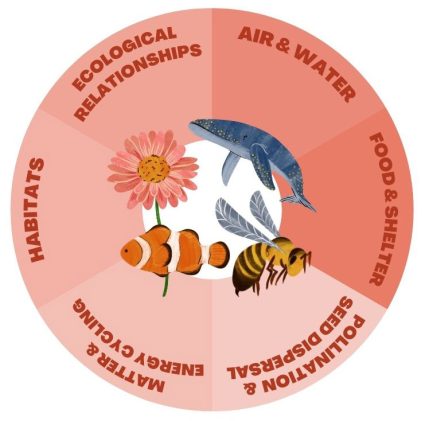
During photosynthesis, plants use sunlight, air, and water to make food and oxygen. This process helps feed other creatures and keeps the air clean. So, air and water connect all living things by cycling energy and materials.
Finally, animals and plants need the right places to live, find food, and be safe. These places are called habitats. Different creatures live in different habitats that match their needs. Everything from tiny insects to big trees rely on each other in some way.
What diagram illustrates the biosphere?
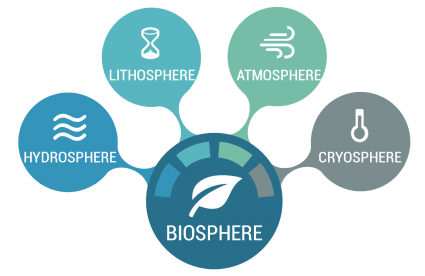
The biosphere is all closely tied together as a collection of different parts. The biosphere (living organisms) interacts with:
- The hydrosphere (liquid water)
- Lithosphere (solid rocks)
- Cryosphere (frozen ice)
- Atmosphere (gas envelope)
For example, living things inhale oxygen and exhale carbon dioxide (CO2) from the atmosphere. Then, plants pull CO2 during photosynthesis to build their structure (mostly glucose).
The biosphere constantly interacts with Earth’s spheres. For example, living things pull water from the soil and air. And oceans soak up carbon from the air. Finally, specific bacteria from the biosphere are only capable of building certain types of rocks.
Where is the biosphere on Earth?
Various environments on Earth, from the freezing polar regions to the scorching depths of ocean vents, demonstrate the incredible adaptability of life.
For example, polar regions, ocean vents, and the deep biosphere are extreme environments in their own unique way. But they can all harbor life.
“You can find life almost anywhere on Earth. Where there’s life, the biosphere is present. Even in the most extreme circumstances, life can persist.”
Polar Regions
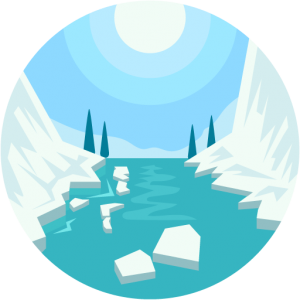
Plants and animals in polar climates endure frigid temperatures year-round. Survival in polar climates requires remarkable adaptations, such as thick insulating fur for animals and specialized antifreeze compounds in plant tissues.
For example, Antarctica is the world’s largest desert averaging −10°C to −60°C. In these polar regions, the biosphere mostly consists of algae, lichens, and mosses.
Animals exist too. For example, penguins eat krill, a fish common in the Southern Ocean. They also have a thick layer of skin and feathers (for waterproofing) to survive the frigid temperature.
Hydrothermal vents
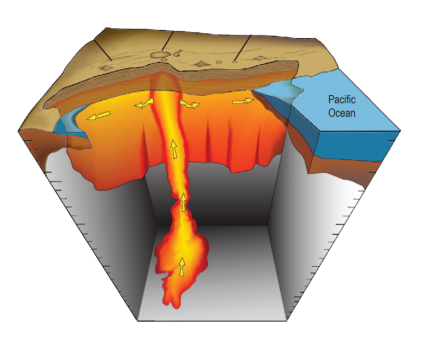
Deep beneath the ocean, the Earth cracks open. Iron-rich sulfur, carbon dioxide, and minerals spew out at these underwater volcanoes.
But what’s surprising is how hundreds of species of animals can still flourish. They don’t need light to survive. Instead, they rely on a process called chemosynthesis [1].
Even more interesting is that these underwater vents are possibly the origin of the Last Universal Common Ancestor (LUCA).
Deep biosphere
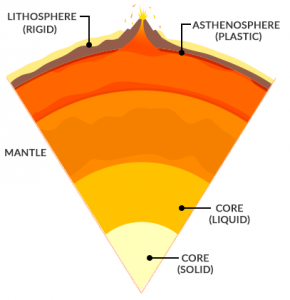
The deep biosphere extends deep into the Earth’s crust. Similar to hydrothermal vents, microorganisms can thrive.
For example, bacteria were found in the crevices of rocks at 500 meters in depth [2]. As deep as 3 kilometers, bacteria exist in anaerobic, hot, and high-pressure environments.
90% of Earth’s carbon resides inside Earth [3] which is the chemical backbone for all essential organic molecules produced by living organisms.
How old is the biosphere?
The biosphere is unique to Earth because it’s the only planet known to support life.
It’s believed that Earth’s biosphere started about 3.5 to 4.1 billion years ago. All living things originated from a common ancestor called the last universal common ancestor (LUCA).
Archaea are believed to be the oldest domain of life. They make up a group of the first organisms to appear on Earth. We know this because they are used to extreme environments like those during the early Earth.
Archaea resembles both eukarya and bacteria. They are single-cells without a nucleus. But they look like bacteria for structure.
Since the evolution of our very early ancestors, the biosphere has altered land, air, and water for over a billion years.

How much does the biosphere change?
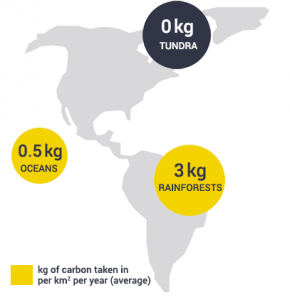
The biosphere is constantly in flux. It fluctuates in the short term based on the seasons. And it changes in the long term from climate change.
Net primary productivity is unique to the biosphere. It’s the rate at which plants take in carbon dioxide during photosynthesis minus respiration.
Productivity peaks in the summer for mid-latitude regions. But when winter comes, productivity drops because of the lower rate of photosynthesis.
Tropical rainforests are the most productive places on the planet. Whereas, polar regions are the least productive ecosystems.
The Biosphere: Life on Earth
The biosphere is the sphere of life on earth. It consists of all the living organisms, their habitats and biomes, and associated non-living components. All these elements interact with them, forming a single interdependent system.
This complex web of life in the biosphere showcases the incredible diversity of species and ecosystems that have evolved to thrive in various environments around the globe.
Don’t be afraid to ask any questions either by using our comment section below.
References
The Depths Below – Life on a Vent. National Oceanic and Atmospheric Administration (NOAA)
Crucial crises in biology: life in the deep biosphere. Int Microbiol. 1998 Dec;1(4):285-94.
The Deep Carbon Observatory. Decade of Discovery Catalyst for the Future.


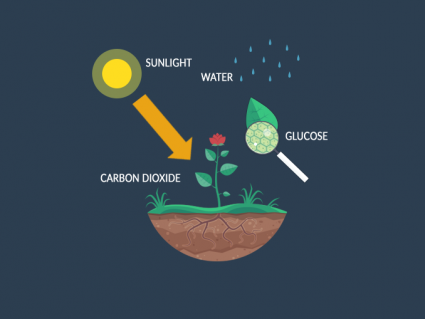
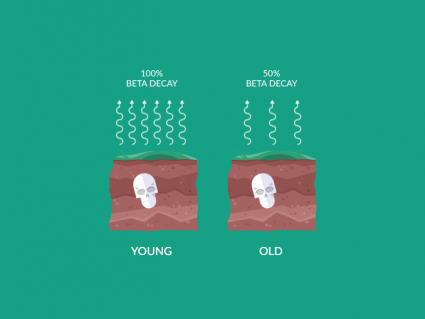
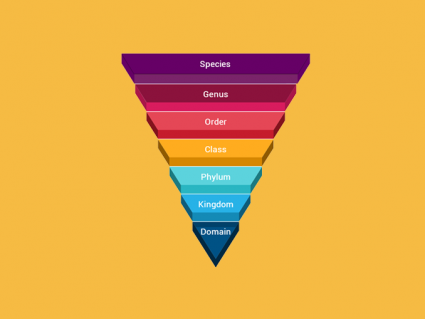
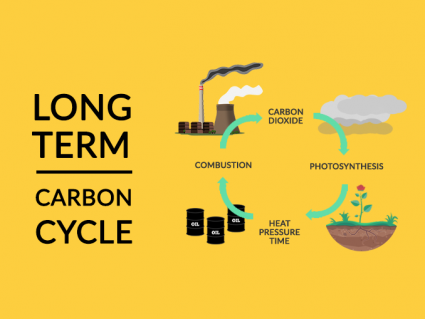
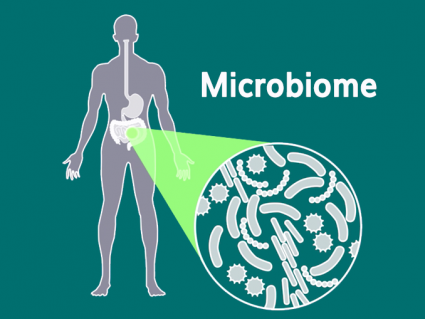

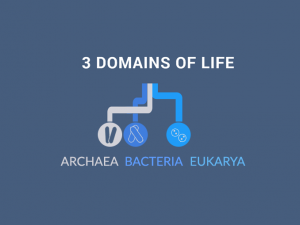
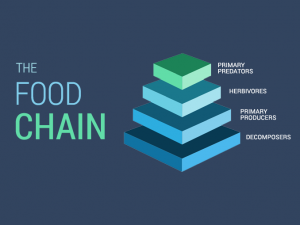
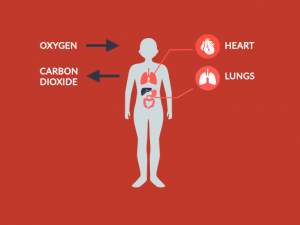
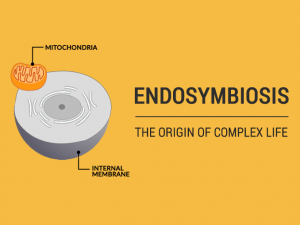
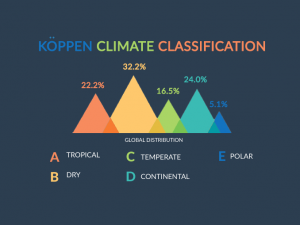
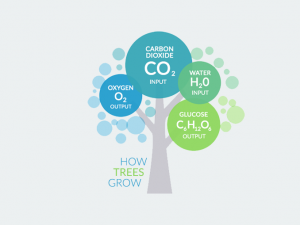
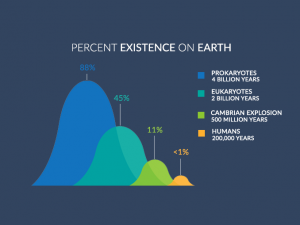
We are presented with a Global Predicament. https://www.researchgate.net/publication/368685373_On_Ravaging_Gaia's_Web_of_Life
Let us look first at a possible solution……. https://www.researchgate.net/publication/367821038_A_Case_for_Limiting_Total_Food_Production_for_Human_Consumption ……….and then consider a root cause. https://www.researchgate.net/publication/357430417_Human_population_activity_the_primary_factor_that_has_precipitated_a_climate_emergency_biodiversity_loss_and_environmental_pollution_on_our_watch
Nice try… However some points are still based on assumptions that have not been empirically substantiated, and could be proven wrong . Established concepts of trophic levels, for instance, is only from 70 years ago, and ‘tho may be reasonable when considering energy, offers no sense of the circularity of substance through the biosphere -e.g. predators are consumed, and may, as discovered in tropical waters, have an inverse relationship of biomass, total predator mass exceeding that of the prey. (Or so I understand) And the interrelationships of biomes actually ( I believe) to generate pathways to gain access to essential resources -air, water and a particularly delicate temperature range –was missed in my reading.
What I found “most objectionable” however is the adherence to the monotheistic theologically imposed origin story that “All living things originated from a common ancestor called the last universal common ancestor (LUCA).” Multiple origins are possible ( I think probable) as the Earth’s waters and distribution of suitable conditions. We’re ignorant, perhaps because all living things metabolize all available material and we can’t observe new life generations. They would be extremely rare and rapidly consumed to extinction by the microscopic predators dominating the ‘biosphere. We have been led to “believe” that all life had one ancestral being. Maybe not!